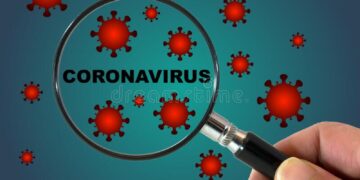Everyone has had a headache at some point. But migraines can be debilitating. How does one get to know a headache is a migraine? Dr PN Renjen, senior consultant, neurology, Indraprastha Apollo Hospitals, says: “A migraine is more than just a severe headache — it has distinct characteristics that set it apart. The pain is typically intense, throbbing, and often affects one side of the head, though it can affect both sides. Many people experience warning signs called ‘aura’ before a migraine strikes, which can include visual disturbances like flashing lights, zigzag lines, or blind spots. Other common symptoms include heightened sensitivity to light, sound, and smells, as well as nausea and vomiting. Some people also report feeling dizzy, experiencing neck pain, or seeing spots. Migraines can last anywhere from 4 to 72 hours, and the pain often worsens with physical activity. Many sufferers report that even routine activities become challenging during an attack. Each person’s migraine experience can be unique, with varying combinations of these symptoms, making it important to track your specific pattern to better identify and manage future episodes.”
Do home remedies work?
While the efficacy of home treatments varies greatly from person to person, numerous natural techniques have shown promise in migraine prevention. Cold or hot compresses on the head or neck can bring relief. Staying in a quiet, dark room and engaging in relaxation techniques such as deep breathing or meditation can help alleviate symptoms.
Acupressure or a light temple massage can help some people feel better. While traditional cures like curry leaves lack scientific support, certain dietary adjustments, such as staying hydrated, eating at regular intervals, and avoiding recognized trigger foods, can be helpful preventative strategies. Essential oils such as peppermint and lavender have proven some efficacy when used topically. However, while home remedies might help manage symptoms, they should not be relied upon as the sole treatment method for severe or chronic migraines.
When to seek medical help?
When migraines have a major impact on everyday living or exhibit troubling patterns, seek medical assistance. If you have a ‘thunderclap headache’, which is an incredibly intense headache that arises within seconds, you should seek medical attention right once because it could suggest a more serious condition. Other warning signs include headaches with fever, stiff neck, mental confusion, seizures, double vision, weakness, or difficulty speaking.
If your migraines become more frequent or severe, or if over-the-counter drugs no longer work, you should see a doctor. Furthermore, if you have migraines on a weekly basis or if they interfere with work, sleep, or other daily activities, you should seek professional medical advice to build an effective treatment strategy.
Can migraines lead to bigger issues?
While migraines are not normally hazardous, they can cause a variety of consequences if not treated properly. Chronic migraines can have a substantial influence on mental health, perhaps causing anxiety and sadness. Some studies have found a link between migraines with aura and a slightly higher risk of stroke, especially in women who smoke or use hormonal contraception. Long-term usage of certain migraine drugs can result in medication overuse headaches, a tough cycle to break.
In rare situations, patients who have recurrent headaches may acquire status migrainosus, a debilitating illness in which attacks persist longer than 72 hours. Additionally, chronic migraines can have an impact on personal relationships, work performance, and general quality of life. Most people, with proper medical care and lifestyle management, can effectively control their migraines and minimise potential complications.
Source: FE







 Finance
Finance







